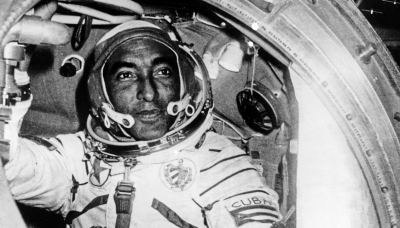What was invented by DF Arago in 1820?

On September 25, 1820, French physicist Francois Arago announced his discovery of an occurrence of electromagnetism. This was just one of Arago's many contributions as he spent a lifetime for the progress of science.
It isn't often that we come across a person who contributes significantly to a number of different fields. Such polymaths - individuals whose knowledge encompasses a wide range of subjects - have always been rare. Frenchman Dominique Francois Jean Arago was one such person in this world, as he donned the hat of a physicist. mathematician, astronomer, and politician in an eventful life.
Born in 1786 in Estagel, Roussillon, France, Arago was one of 11 children. Educated at the Municipal College of Perpignan, Arago was drawn towards mathematics from a young age. He was admitted to the Ecole Polytechnique in Paris, where he succeeded French mathematician Gaspard Monge as the chair of Analytic Geometry at the young age of 23.
Love for optics
He made his first major contributions to science in the decade that followed. Working with French engineer Augustin-Jean Fresnel, Arago was able to show that while two rays polarised in a plane can interfere with each other, two beams of light polarised perpendicular to each other cannot interfere with each other. This research led to the discovery of the laws of light polarisation.
In 1820, Arago briefly interrupted his optical work to significantly expand on electromagnetic theories. Having been invited to Geneva to witness the experiments of Danish physicist Hans Christian Oersted linking electricity to magnetism, Arago was instantly converted and developed a huge interest in the subject.
Apart from repeating the Geneva experiments at the Paris Academy, Arago also experimented on his own. He was able to demonstrate that by passing an electric current through a cylindrical spiral of wire, it could be made to behave like a magnet. The temporary magnetisation allowed it to attract iron filings, which then fell off when the current ceased. He announced this occurrence of electromagnetism on September 25, 1820.
Electromagnetic induction
Soon after, Arago discovered the principle of the production of magnetism by rotation of a nonmagnetic conductor. He was able to show that the rotation of a nonmagnetic metallic substance like copper created a magnetic effect as it produced rotation in a magnetic needle suspended over it. It was another decade before English scientist Michael Faraday explained these using his theory of electromagnetic induction in 1831.
Arago served as the director of the Paris Observatory from 1830. As an astronomer, he was among the first to explain the scintillation of stars using interference phenomena. He was also able to provide vital stimulus to young astronomers, including Frenchman Urbain Le Verrier.
"With the point of his pen"
In 1845, Arago suggested to his protege that he investigate the anomalies in the motion of Uranus. These investigations resulted in Le Verriers discovery of Neptune in 1846, and Arago best summed it up when he called Le Verrier the man who "discovered a planet with the point of his pen". Arago backed Le Verrier in the dispute between Le Verrier and British astronomer John Couch Adams over priority in discovering Neptune and even suggested naming the planet for Le Verrier.
Amidst all his scientific endeavours, Arago also found time to back the ideas of others. Even though French photographer Louis Daguerre was struggling to sell his daguerreotype process, he was able to catch the attention of Arago, who served as the permanent secretary of the French Academy of Sciences.
Advocate for photography
Arago arranged for the first public display of daguerreotypes in January 1839 and used the buzz it created for his lobbying. He was able to get the French Parliament to grant pensions to Daguerre and Isidore Niepce, son of French inventor Nicephore Niepce, so that they could make all the steps of the photographic process public. Arago stated that "France should then nobly give to the whole world this discovery which could contribute so much to the progress of art and science" and the technical details were made public on August 19, 1839 (hence celebrated as World Photography Day).
Optics and the study of light remained close to Arago's heart and he devised an experiment to prove the wave theory of light. In 1838, he described a test for comparing the velocity of light in air and in water or glass. The elaborate arrangements required for the experiment and his own failing eyesight, however, meant that it wasn't performed. Shortly before Arago's death, French physicists Hippolyte Fizeau and Leon Foucault demonstrated the retardation of light in denser media by improving on Arago's suggested method.
For a man who spent so much of his time pursuing science, he was also able to devote to other causes as a politician. Following the July Revolution of 1830 and up until his death in 1853, Arago was active as a politician, delivering influential speeches regarding educational reform, freedom of press, and the application of scientific thought for progress. After the February Revolution of 1848, he served as the Minister of War and the Navy and used his power to abolish slavery in French colonies. Arago's influential life highlights the fact that he always possessed the faculty to inspire and stimulate those around him and the public at large, both in the realm of science and in politics.
Picture Credit : Google
